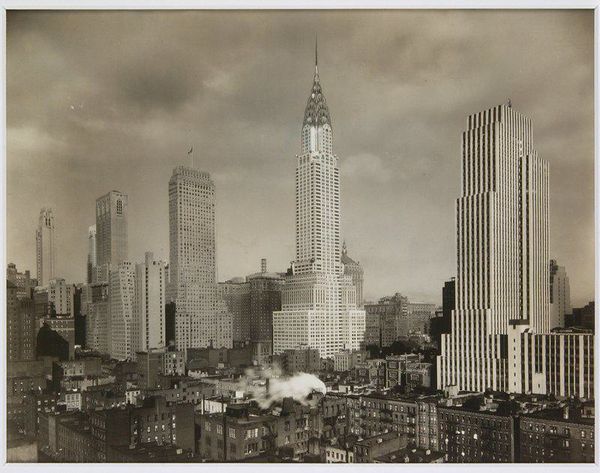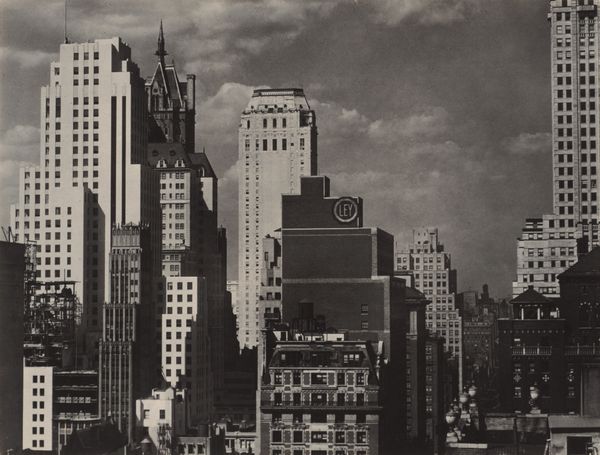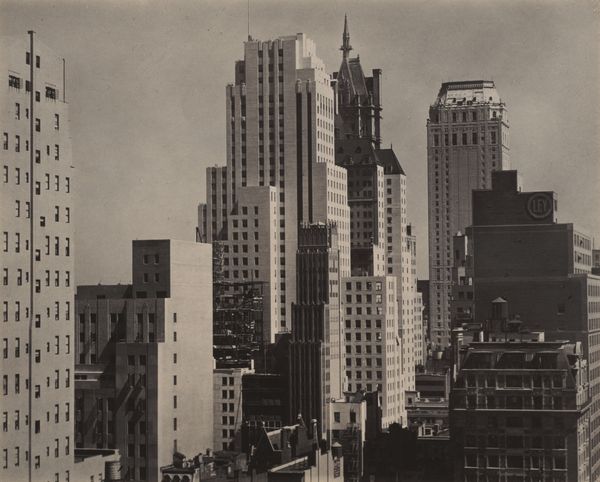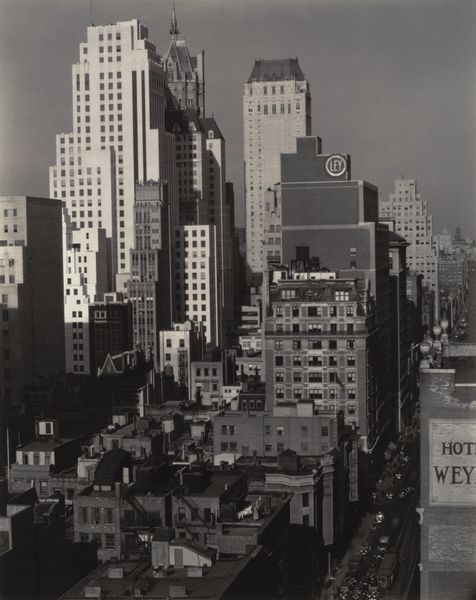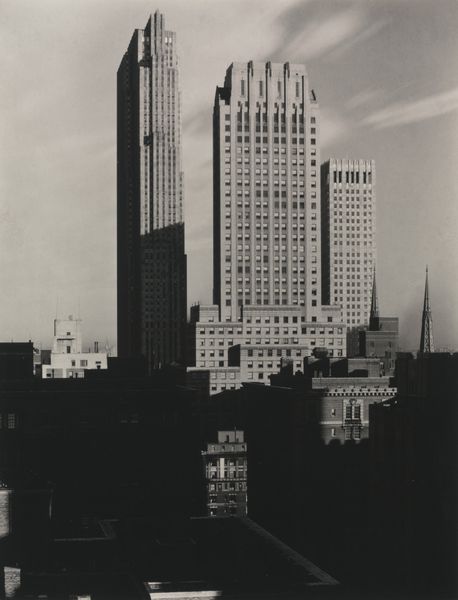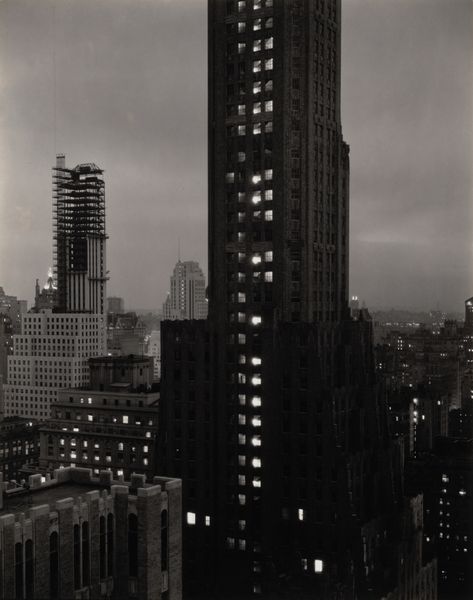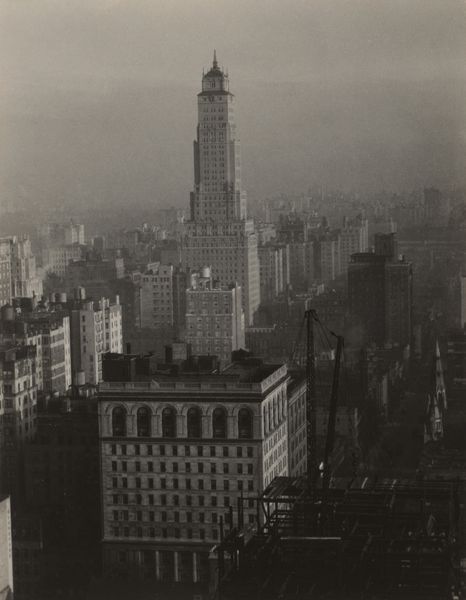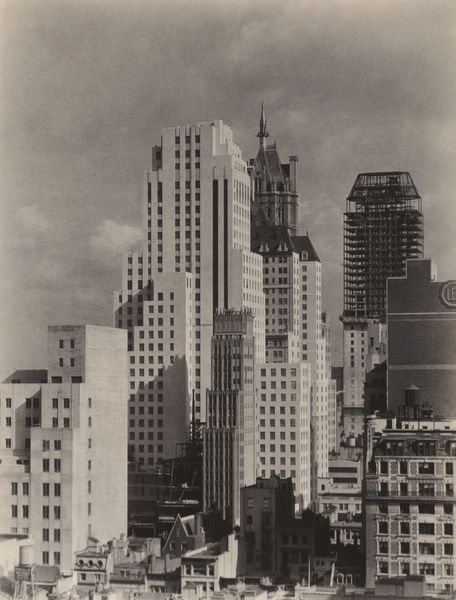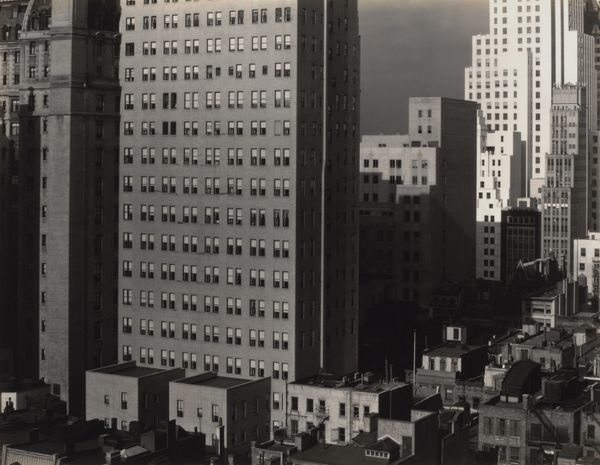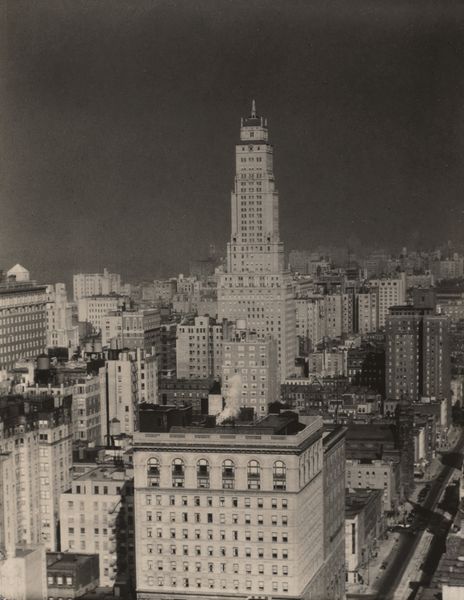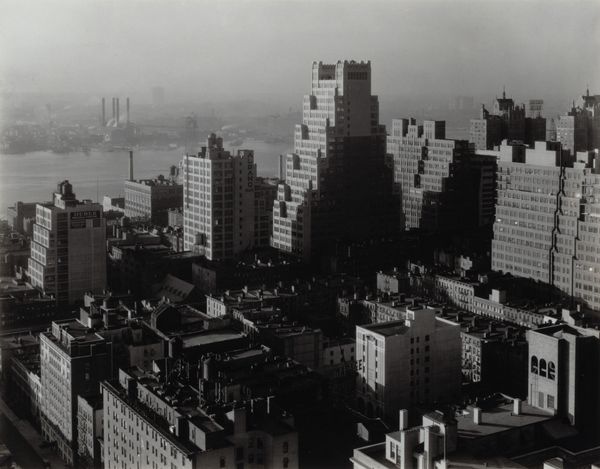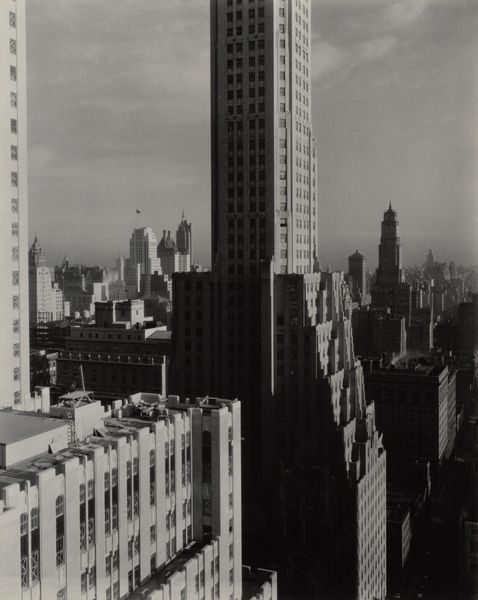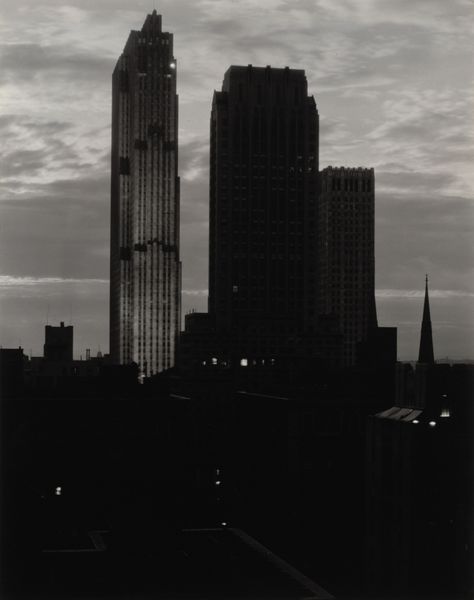
photography
#
precisionism
#
street shot
#
landscape
#
outdoor photograph
#
street lighting
#
urban cityscape
#
outdoor photo
#
historic architecture
#
photography
#
street photography
#
cityscape
#
man-made
#
city photography
#
modernism
#
historical building
Dimensions: sheet (trimmed to image): 11.6 x 8.8 cm (4 9/16 x 3 7/16 in.) mount: 35.2 x 27.6 cm (13 7/8 x 10 7/8 in.)
Copyright: National Gallery of Art: CC0 1.0
Curator: Immediately, I’m struck by the density. The way the buildings seem to breathe and fight for space. Editor: This is Alfred Stieglitz’s photograph, “New York from 405 East 54th Street,” taken between 1936 and 1937. What draws your eye? Curator: The relationship between the Chrysler and Empire State buildings. They almost seem to converse with one another. The Chrysler, ornate and earlier, set against the stripped down, perhaps more powerful, Empire State Building. This contrast seems quite revealing. Editor: Reveal what, precisely? Stieglitz made a conscious choice of vantage point. I wonder about the labor, the construction, and even the ownership involved in these imposing structures. Whose city is it really? Curator: Ah, there it is. But it feels bigger, no? I am thinking about class, about how architectural space encodes access. You can consider these monuments as phallic symbols, but I see them more as indicators of power struggles in a pre-war era. How does this architectural image frame these hierarchies? How does it obscure labour by glorifying these skyscrapers? Editor: I see your point regarding architectural narratives and obscured labor. What truly captivates me is the tangible texture that Stieglitz captures. He brings forward questions about production, not just whose bodies were involved in the construction, but who will occupy the spaces? Curator: Agreed. We need to remember how even photographic printing, specifically the processes of modernist photographers like Stieglitz, impacted our perception and construction of truth in the city, then and now. Editor: Photography and concrete are materials inextricably linked to ideas of progress. Ultimately this work invites viewers to look past the beauty to observe the material processes that built both the structures and our perception of them. Curator: And beyond that, how our own perceptions are influenced by what we inherit from a past mediated by technology and power structures.
Comments
No comments
Be the first to comment and join the conversation on the ultimate creative platform.
